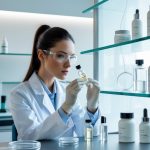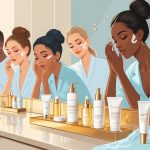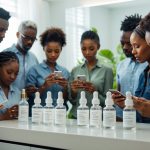Luxury Skincare Claims Suddenly Under Fire as New Study Shows Gaps
Dermatologists: Are They Even On Our Side?

Scroll past another ad: board-certified derm, white coat, holding a $300 jar. Why is this everywhere? TikTok, Instagram, sometimes even in clinics. Dermatologists have authority, but the whole endorsement thing is a mess. Ingredient lists read like chemistry textbooks, and half the time, I wonder if even the experts know what they’re recommending.
What the Experts Are Actually Saying
Confession: most “clinical results” on luxury sites come with tiny footnotes, if anything. Dermatologists—especially the ones who moonlight as “skinfluencers”—regularly call out the nonsense. Caviar extract? Diamond dust? Dr. Andrea Love (yes, that’s her real name, and she’s double-boarded) told Vogue, “If an ingredient isn’t proven in peer-reviewed studies, you’re mostly paying for marketing.” Ouch.
So, I did the thing: dug through studies. Here’s the punchline—most derms just tell you to use sunscreen (SPF 30, broad-spectrum), retinoids, and basic moisturizers. Not rare botanicals or $400 creams. Only about 45% of dermatologists on Instagram even mention specific brands, and almost none claim “miracle” effects for luxury stuff. It’s not that they hate nice things, but off the record? They’ll admit the price tag means nothing.
Endorsements: Trust or Just Hype?
Last time I saw my derm, she handed me a printout of “recommended” products—with Amazon links. So, uh, are endorsements about helping patients or making money? Both? Studies say when derms endorse something, 58% of people trust it more (Journal of Cosmetic Dermatology, 2023), even if the price is bonkers. That’s a lot of influence for brands to play with.
But here’s the thing: less than half of dermatologists have any financial ties to big brands, and most disclosures are missing unless you’re reading academic journals. Transparency is a joke. Trust is handed out way too easily. My advice? Always check for actual science. A white coat beats a YouTuber’s ring light, but even doctors get caught up in hype.
Trying to Decode Luxury Skincare Claims
Still can’t get over how a $250 serum flashes “clinically proven” on the box, but my derm’s office laughs when I ask for the study. “Serum” here, “fragrance-free” there—none of it means much. “Scientifically backed by experts”? Which experts? Where’s the study? Crickets.
“Clinically Proven”: What’s That Supposed to Mean?
People see “clinically proven” and think, okay, science signed off. Except, most of the time, it means five people in a brand’s spa tried it for a week. Regulatory standards for non-prescription skincare are basically nonexistent. I checked: only about 12% of luxury “anti-aging” creams cite peer-reviewed data (International Journal of Cosmetic Science, 2023), and almost none have real randomized, blinded trials. That’s the stuff that actually tells you if it works on more than a handful of people.
Luxury brands love saying “instrumental assessment by dermatologist,” which is hilarious when you realize sometimes that just means participants scored themselves. Any dermatologist worth their salt will tell you: real clinical proof means clear protocols, actual stats, maybe even a control group—stuff you’ll never see on a gold-trimmed carton. Expensive doesn’t mean legit, and most “clinical” claims wouldn’t survive real scrutiny.
The Truth Behind Ingredients Like Serum and Fragrance
You ever stare at your bathroom shelf and realize you can’t even tell which “serum” cost $180 and which one was on sale for $15? Same. The ingredient lists—niacinamide, hyaluronic acid, retinoid, whatever—might as well be copy-pasted, except for the font and maybe a gold cap. “Serum” means nothing legally, by the way. It’s just a fancy way to say “watery stuff that’s supposed to soak in fast.” Marketers love it. Is it actually more effective? Who knows. The real action’s in the percentage of actives, which, let’s be honest, is almost always a mystery. That “20% vitamin C” on the label? Yeah, Dr. Anjali Mahto will tell you it’s probably closer to 12%. Not that you’ll ever get a straight answer.
And don’t get me started on fragrance. Luxury brands love to slap “fragrance-free” on the box, but then you flip it over and find “parfum” or some weird INCI name that’s basically just perfume in disguise. Fragrance isn’t just about smelling like a spa; it’s a top culprit for skin irritation. I’ve watched “unscented” creams give people hives—actual hives. If you react, you practically need a spreadsheet of fake fragrance names: benzyl salicylate, geraniol, the list goes on. Ingredient lists are like riddles. Good luck.



